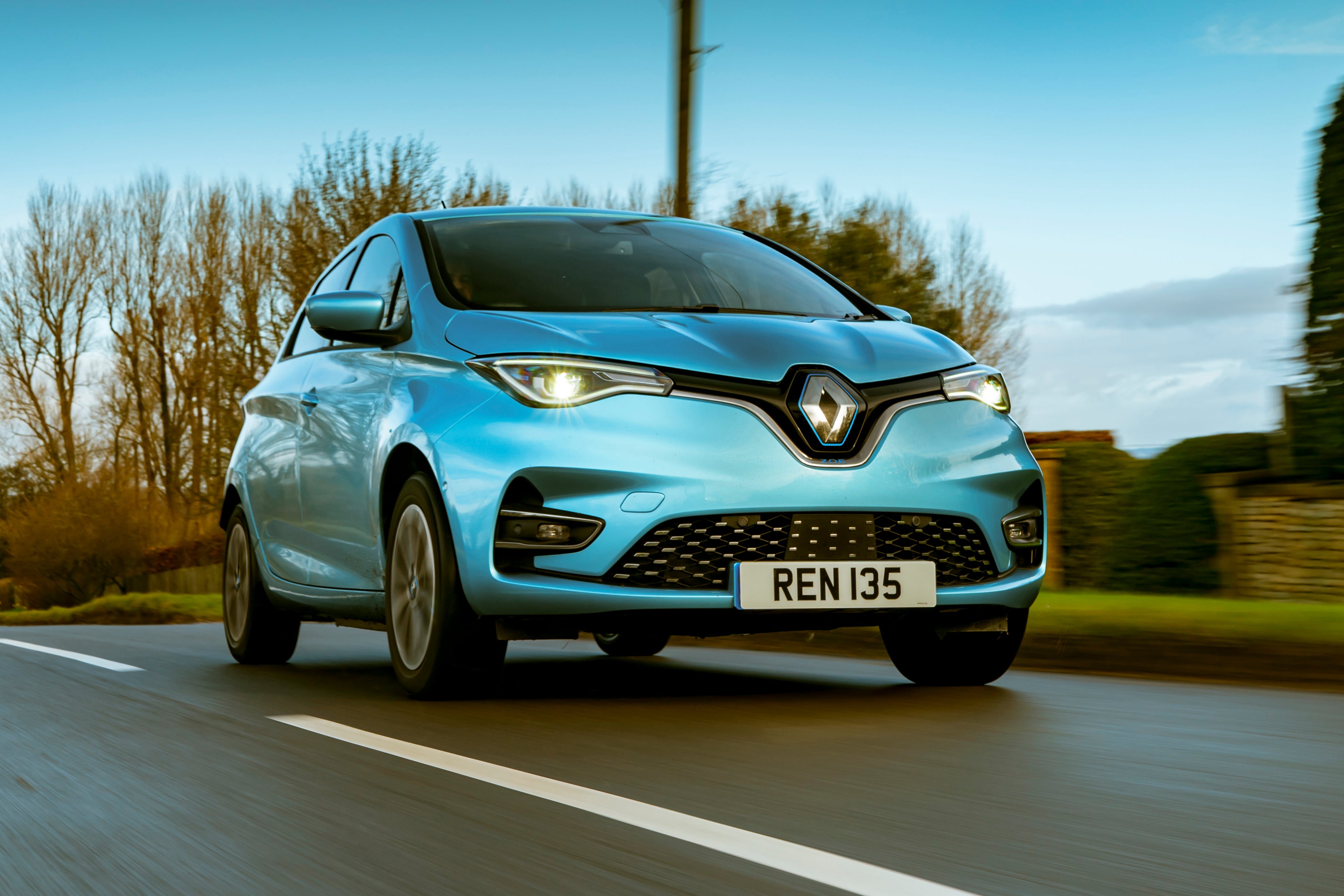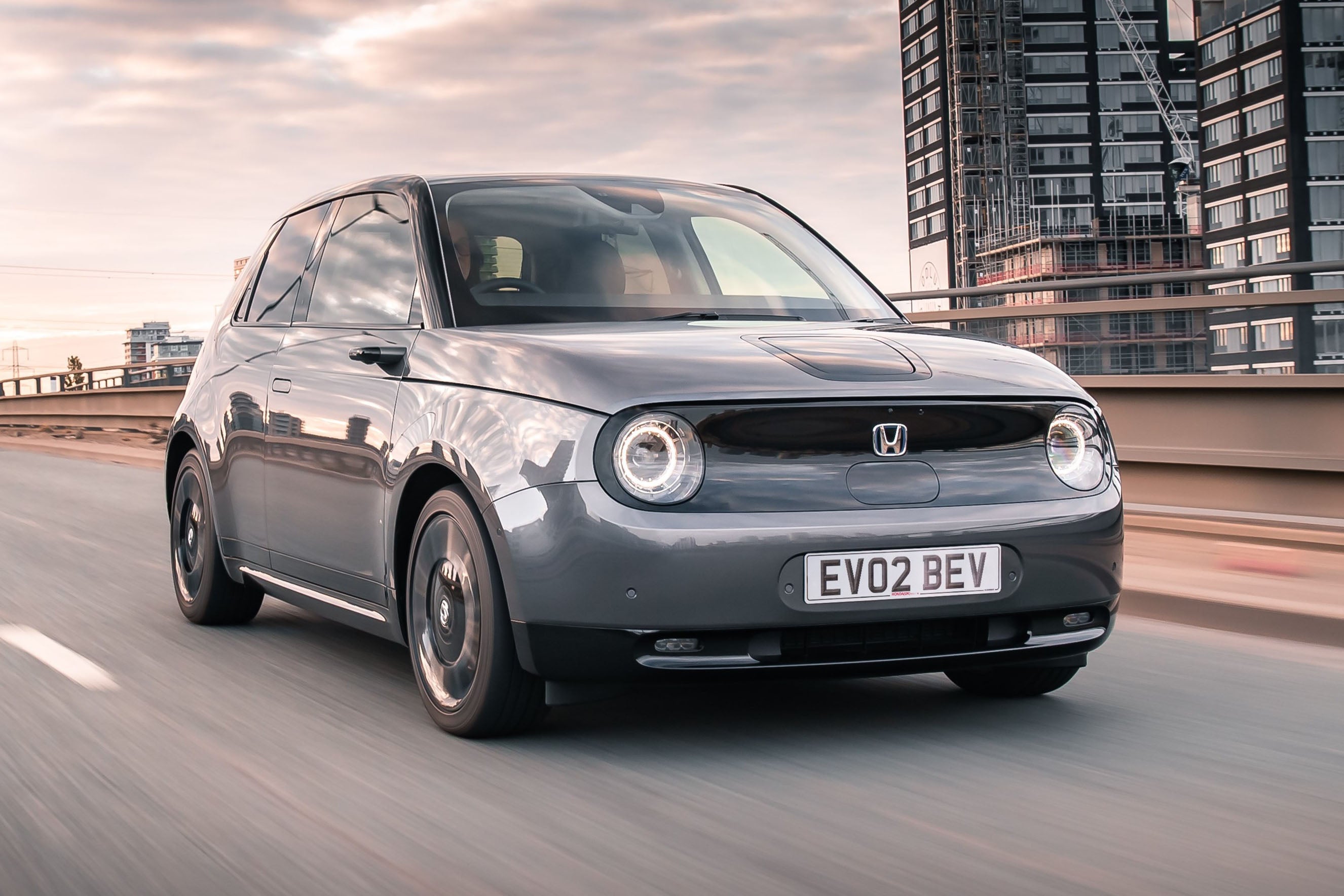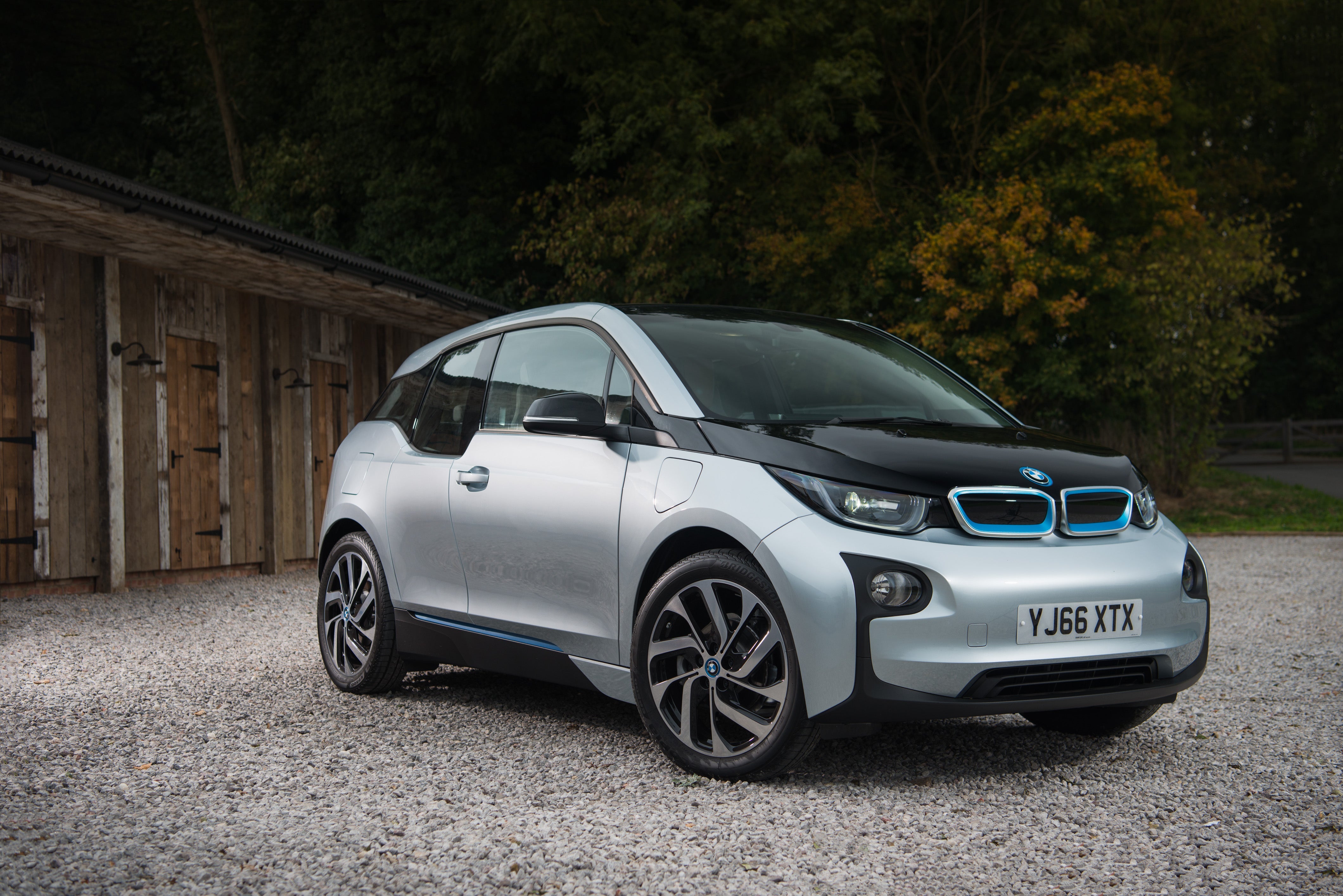Nissan Leaf (2011-2018) Review
Written by Andrew Brady
Quick overview
Pros
- The first everyday electric car
- Prices becoming very tempting
- Well-equipped and practical
Cons
- Poor battery range of early cars
- Oddball styling
- Not all cars offer fast charging
Overall verdict on the Nissan Leaf
"In this Nissan Leaf review we are looking at a car that played a huge part in kickstarting the EV revolution. This generation of Nissan Leaf was the first mass-produced electric car, and although sales started slowly and early cars offered limited range by today's standards, the Nissan Leaf set the template in terms of ease of use and making electric cars as 'normal' as possible."
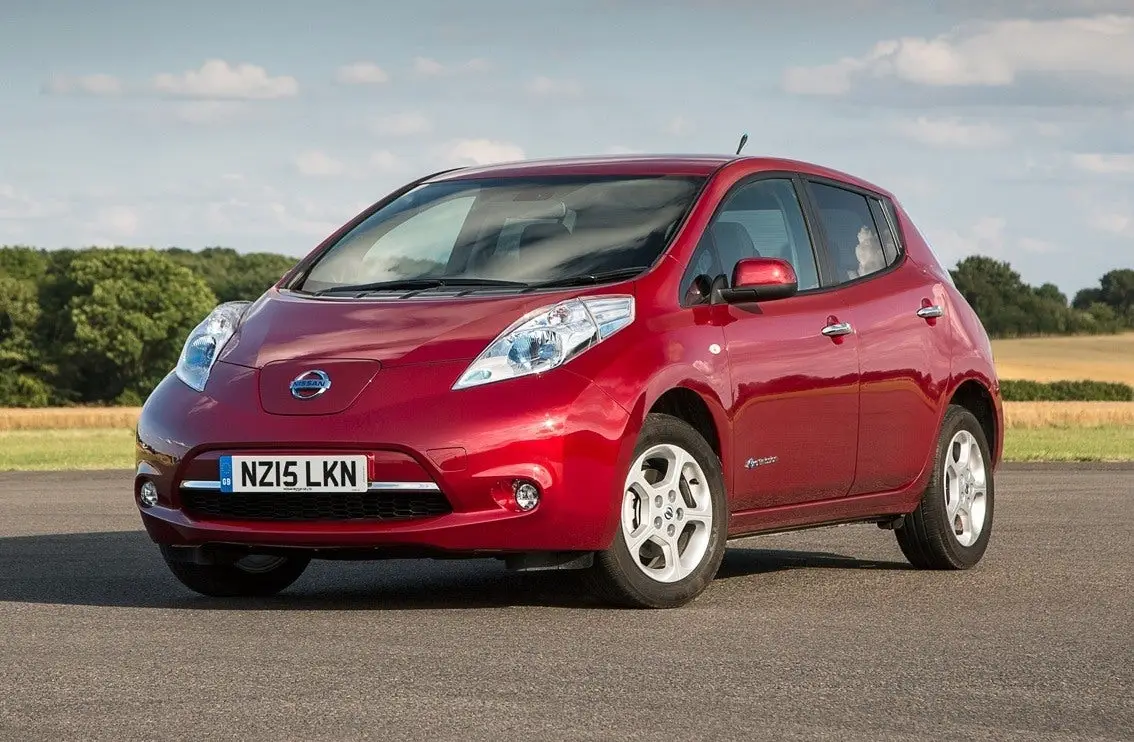
The Nissan Leaf will be forever famous for being the first mainstream electric car on sale in Britain. Previous curios such as the Reva G-Wiz were laughably unsophisticated, yet expensive – meaning few thought an everyday EV was a realistic proposition any time soon. Nissan begged to differ. The Leaf did for electric cars what the Toyota Prius did for hybrids."
We know: it’s an unusual-looking thing. Deciding that building the first real-world electric car allowed it to do something different, Nissan eschewed the familiar family hatchback template for something more rounded and, yes, more egg-like. Whether you love it or loathe it, you'll certainly have an opinion on it.
The Leaf went on sale in 2011, although early sales were a little restricted by the sheer unfamiliarity of it. Sales started to grow as the years went on and more people became convinced an electric car could be their everyday car.
Being conventional in the day-to-day stuff helped here. The Leaf is a proper five-door vehicle, with (just about) enough space for adults in the rear, plus a reasonably big boot. It doesn’t match a similar-era Volkswagen Golf, because the batteries had to go somewhere, but it’s still a viable daily driver if you don’t need maximum space efficiency.
To drive, even the earliest Leaf will still impress today – not least because of its silent running. Those new to electric cars will find the sheer peace and quiet uncanny at first, then quickly think it a real selling point. The electric motor also responds smartly, for acceleration smoother and more powerful than many a family hatch. You will never once think of comparing it to a milk float.
The earliest Leaf had an 80kW motor – that’s 109PS – coupled with a 24kWh lithium-ion battery. To be honest, this isn’t quite sufficient, giving a range of 109 miles. It was as big as Nissan could manage at the time, but it might prove a little restrictive to some. It was improved to 124 miles in 2013 before a better solution came in 2015: a bigger 30kWh battery, delivering a range of 155 miles.
By now, the Nissan Leaf was being built in the UK, at Nissan’s giant Sunderland plant. The batteries are made there as well, making it a truly British electric car.
It’s worth looking for second-hand cars fitted with the 6.6kWh onboard charger, too. This allows owners to use fast chargers, and top up the batteries from zero to 100% in less than four hours.
Further improvements came later in the Nissan Leaf’s life, particularly the good-looking and popular Black Edition launched in spring 2017. It features a neat black makeover outside, complete with black 16-inch alloys and a roof spoiler, and also has LED headlights.
Growing interest in electric cars is stretching to the used market, as prices put them within reach of more buyers. The Nissan Leaf is enjoying sustained interest as a good first-time EV, and it’s easy to see why. Choose a 2015-on car and you’ll have a fine entry point into the world of electric motoring. And maybe even a modern classic in waiting.
Looking for a used car for sale? We've got 100s of Nissan Approved Used Cars for Sale for you to choose from, including a wide range of Nissan Leafs for sale. This car was replaced in 2018, by a new version of the Nissan Leaf.
Is the Nissan Leaf right for you?
If you cover a high mileage, the previous Nissan Leaf isn’t the electric car for you. Battery technology in 2011 wasn’t what it is now, and the 109-mile range is poor.
On the other hand, if you have a home charger, and don’t need to cover hundreds of miles a day, an electric car will not only help you do your bit for the planet, but also save you a fortune in fuel costs. This is where the Nissan Leaf – one of the most popular new electric cars for some time now – might well make sense.
It’s practical, well equipped, effortless to drive and, as we mentioned, distinctive to look at, even if you might not necessarily think that a good thing. The clincher for many will be prices: a new electric car might be far out of reach, but a used Nissan Leaf for the same cost as a new Dacia Sandero? A very different proposition indeed...
What’s the best Nissan Leaf model/engine to choose?
Nissan only offered one motor with the Nissan Leaf, so there’s nothing to choose from there. We of course would recommend the 30kWh battery, and ideally one with the fast charger to make long-distance trips more painless.
Visia grade is a bit basic, so we’d err towards Acenta or Tekna. Our favourite is the Black Edition, because it looks so distinctive, while still costing less than the range-topping Tekna.
What other cars are similar to the Nissan Leaf?
The Nissan Leaf was the pioneer, but it was followed a little while later by another mainstream electric car, the Renault Zoe. This was a bit smaller than the Nissan Leaf, but was a less opinion-splitting machine in terms of looks. Renault’s bizarre battery rental strategy makes them more complicated second-hand buys, though.
Volkswagen in time launched an all-electric e-Golf, while Ford rolled out the (very rare) Focus Electric. Continuing the reputation of the electric car for looking bizarre, Mitsubishi sold the oddball i-MIEV for a while (there were Citroen and Peugeot versions, too) and the Renault Fluence was a leftfield electric saloon with a large boot. Generally, though, the Leaf had few rivals when new, giving it a distinct advantage on the used market.
Comfort and design: Nissan Leaf interior
"The Nissan Leaf’s curious external styling isn’t fully carried through inside. Again, some will be thankful for this. The layout is surprisingly conventional for a futuristic electric car, with a familiar-looking centre console and control layout. The most unusual element is probably the gear shifter itself – instead of a lever, it comprises a circular knob set within a ball-shaped mount. Very space-age."
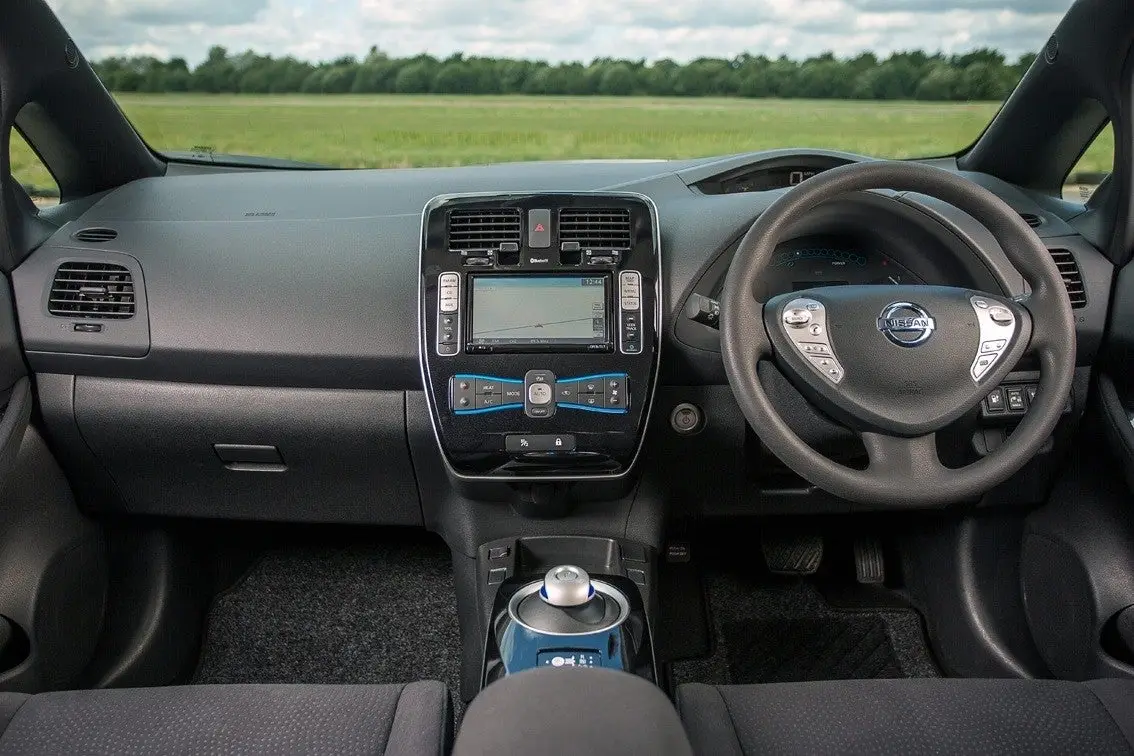
The shifter, along with other elements within the car, is accented with blue trim: Nissan’s trademark colour for its zero-emissions vehicles. The Nissan badges on the outside are also tinted with blue.
Ahead of the driver is a fully electronic instrument pack. The speedo sits on top of the dashboard, and that’s straightforward enough. What you’ll want to focus on is the cluster behind the steering wheel, which displays the essentials – specifically, range, plus an additional battery condition gauge. The range is a precise readout in miles, which is easy to understand. The cluster also contains various other displays, such as a power usage strip meter at the top. Again, it’s all accented in blue.
The seats are firm and mounted a little high – again, due to the batteries beneath – but it’s comfortable enough, and as well laid-out as you’d hope a custom-built electric car would be. The tops of the headlights are a neat design touch: they contain little dimples, making it a bit easier to park up close to the EV charger without bumping it. The charging slot is behind the Nissan badge at the front of the car.
Nissan improved the heater from spring 2013, so it drained the battery less in cold weather. If you feel the cold and often drive in winter, look for one of these cars. There was also an LED installed in the front charger socket, making it easier to fit the charging cable in the dark.
Quality and finish
Like all Japanese cars, the Nissan Leaf is built to a very high standard. Everything is precise and accurate, with smooth panel gaps and rich paint quality. Inside, it all feels very tight and robust, and we can almost guarantee you won’t hear any rattles – even in the earliest models.
It’s a shame Nissan didn’t invest just a few more pennies into the finish, though. It’s just a bit too plasticky, with hard materials and shiny surfaces in clear view. A few more soft-touch surfaces would make all the difference, particularly given how durable the car itself seems to be. In fairness, 2013 UK-built cars were better in this regard, including an optional matt black dashboard that makes a big difference to perceived quality.
At least the interior is durable. It should shrug off the heavy-duty use of a growing family thanks to its hard-wearing surfaces.
Infotainment: Touchscreen, USB, nav and stereo in the Nissan Leaf
The infotainment system on the Nissan Leaf is comprehensive and tailored to the unique requirements of electric cars. The colour touchscreen displays nearby charging stations, along with a graphical representation of ‘reachable area’. It can even suggest ‘eco routes’, for maximum battery range.
The Nissan Leaf was one of the first cars to have a complementary smartphone app, called Nissan Connect EV. It allows owners to set the air-con remotely, or control recharging via a timer to take advantage of off-peak electricity. It’s a great tool on hot or cold days – you can get the cabin to the right temperature remotely while the car is still plugged in, so you don’t waste battery power doing so on the move.
All models apart from base Visia come with this comprehensive media system, which includes standard navigation and a reverse-parking camera. It’s fair to say the Nissan Leaf is a much less useful EV without it.
Space and practicality: Nissan Leaf boot space
The driving position feels higher than a normal family hatchback. That’s because you’re sitting on top of the batteries, which are mounted beneath the floor. However, given how popular the high-rise driving position of SUVs is these days, we don’t think this is something potential buyers will object to – and it does help give a good view out.
Indeed, the lack of an engine up front means the Nissan Leaf has a shorter nose than normal cars. This makes it feel a bit more manoeuvrable and easier to drive in town, an effect aided by those guides on top of the headlights. The driving position is a tale of two halves – perfect pedal placement is offset by a lack of reach adjustment for the steering wheel. The limited range of up-down adjustment is also a bit frustrating.
In the rear, the floor is a bit shallow. It’s spacious enough for adults in there – but they will feel a bit perched, with their knees in the air, lacking under-thigh support from the bench seat. It would be nice to have a bit more space under the front seats for feet, too.
The boot is an impressive size, its 370 litres almost exactly matching a Volkswagen Golf. This is where the custom-built electric car underpinnings really come into their own. The load sill is a bit high, but the boot is reasonably wide and well-shaped. With the seats folded, it expands to 720 litres (this sounds a bit small as the seat-backs don’t have the space to fold fully flat, so they rest on the bench seat itself, eating into space).
The biggest inconvenience here will be some intrusion from the structure behind the rear seats: it’s there to strengthen the car for the heavy batteries beneath. On the other hand, we like the little battery charger carry-case that’s been custom-designed for the Nissan Leaf, which is stored on the right-hand side of the boot. Make sure your used car comes with it.
The Nissan Leaf dimensions are 4445mm long, 1967mm wide and 1550mm tall.
Handling and ride quality: What is the Nissan Leaf like to drive?
"Driver-delighting dynamics weren’t high on the list of priorities for the Nissan Leaf. It’s not that sort of car, and is much more likely to be driven gently, saving range, than ‘door handled’ around remote hillsides."
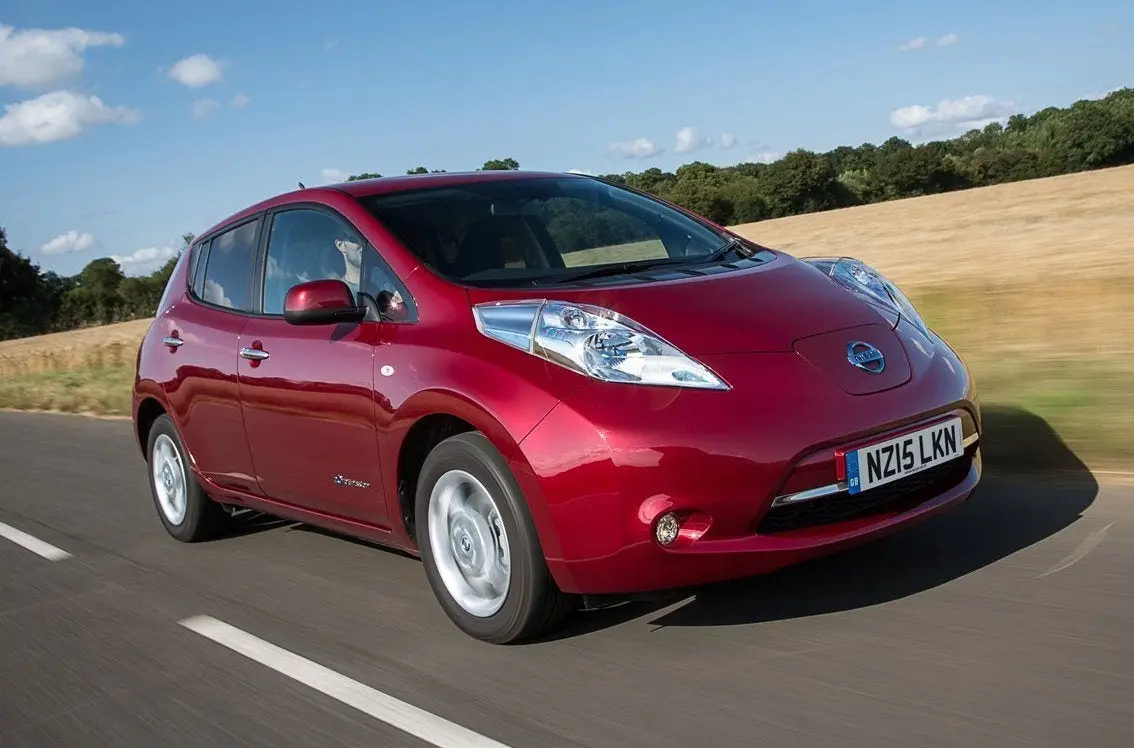
Ride comfort was prioritised by the Nissan engineers, which is why early models demonstrate such a supple and comfortable low-speed feel. They are very smooth-running in town, soaking up potholes with aplomb. The trouble is, this makes them rather floaty at higher speeds, which took confidence away from the driver and could also lead to passengers becoming car sick.
So, from 2013, Nissan firmed up the suspension and added more weight to the steering. These later versions aren’t quite as cushioned in town, but they are a lot better overall, with more control and a feeling of safer prowess on twisting roads.
Because the Nissan Leaf has so little weight at the front end, it turns into corners easily and eagerly. You don’t feel as if you’re having to fight the car, which helps give an easygoing, roll-along feel. What you don’t get is much feedback, and when roads become very challenging, the Nissan Leaf prefers to just about cope, rather than involving the driver in any meaningful way.
A relaxed, laid-back gait is the best approach to driving the Nissan Leaf. Let the car do the work and de-stress you in silence. Don’t worry about on-the-limit feel, as that’s irrelevant. Just chill and enjoy the ride; it won’t be memorable, but it will be painless.
What engines and gearboxes are available in the Nissan Leaf?
For those new to them, the really surprising aspect of electric cars is how quickly and cleanly they accelerate. There are no gears, and the engine doesn’t have to rev itself up to speed in order to deliver meaningful go. Simply press the accelerator and you surge forward, instantly.
The Nissan Leaf does 0-62mph in 11.5 seconds, but feels a lot quicker than this, because there is so much immediate torque. You will feel it the instant you press on the accelerator. If you’re particularly lead-footed, you might even get a bit of neck-snap, which may well surprise your passengers.
The Nissan Leaf’s 109PS motor doesn’t have to worry about a gearbox, so it simply surges forward seamlessly until you lift off. And if you’re getting worried about range, there’s a ‘B’ setting for the gearbox that, when you release the accelerator, turns the motor into a generator, creating electricity and slowing the car down at the same time.
If you’re smart, you can actually drive a Nissan Leaf without hardly touching the brakes. It's called the ‘one-pedal’ experience and it's pretty good... probably not a good idea to use it the first time you parallel park, though.
The Nissan Leaf is also automatic as standard, naturally, adding to the convenience (and effectively giving buyers a ‘free’ auto gearbox).
Refinement and noise levels
This is the other uncanny aspect of electric cars – just how quiet they are. With no engine roaring away up front, only a bit of whine from the motor signals the car is accelerating forwards, and even this sounds more like a sci-fi spaceship than a car.
The biggest challenge for electric car designers is making sure refinement elsewhere is up to scratch. A noisy engine can hide a lot of sins, such as excessive wind noise or suspension clatter. Nissan has worked hard in these areas to make sure the Nissan Leaf wasn’t a letdown.
Refinement is, therefore excellent, with extremely low noise levels. There is very little roar from the road surface or tyres, and wind noise is kept at bay. Even the door mirrors barely whistle at speed. This is why many owners chose the optional Bose premium sound system – the car is so quiet that it’s the perfect place to enjoy music.
Safety equipment: How safe is the Nissan Leaf?
The Nissan Leaf was awarded a very strong safety rating by Euro NCAP in 2012, showing how highly-optimised its custom electric car underpinnings are. A full five-star rating comprised 89% for adult occupant protection, 83% for child safety, 65% for pedestrian protection and 84% for safety assist features.
All Nissan Leaf models feature front, side and curtain airbags. There’s ISOFIX for the rear seats, although there is no airbag cut-off switch for the front passenger airbag. Disappointingly, the seatbelt reminder waning also only covers those in the front, not the rear.
Every Nissan Leaf also comes with a standard speed assistance device, to stop motorists exceeding a pre-determined limit. It’s particularly useful in an electric car, as the silence and instant response from the electric motor mean you easily exceed speed limits without trying.
Maximum EV range
The very earliest cars have a maximum range of 109 miles, which really isn’t good enough. Better to take one of the UK-built versions, from spring 2013, which have tech updates to the battery software. These take the range up to 124 miles. Nissan also introduced the 6.6kW onboard charger option, allowing fast-charging to 100 percent capacity in less than four hours.
The longest-range Nissan Leaf has a 155-mile range, as the battery was updated from 24kWh to 30kWh in autumn 2015. Spot these cars by their upgraded roof-mounted aerial and a cool new bronze paint colour.
MPG and fuel costs: What does a Nissan Leaf cost to run?
"As standard, the Nissan Leaf is fitted with a 3.3kW onboard charger. For the earlier 24kWh battery, this means it can charge from zero to 80 percent via a 50kW charger in 30 minutes. "
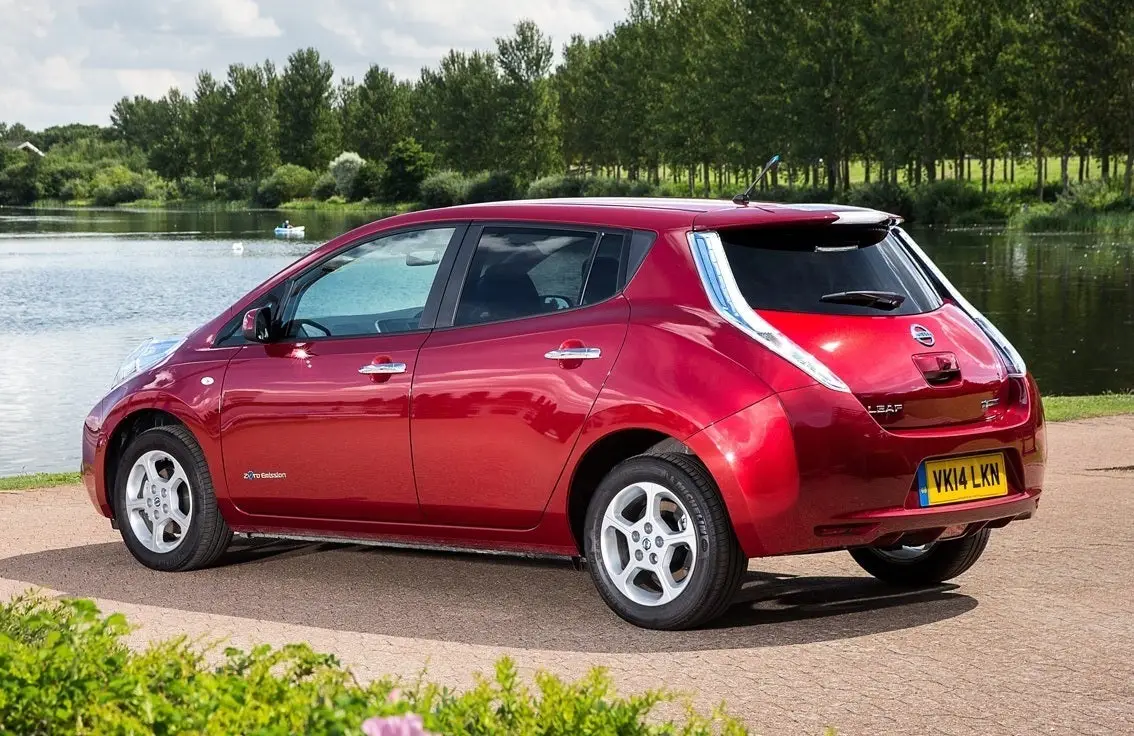
A 7kW home charger wallbox takes 4.5 hours to go from zero to 100%, while a lower-power 3kW wallbox takes 10 hours – still fast enough to fully-charge a flat Nissan Leaf overnight on a driveway.
Models with the 6.6kW onboard charger are faster – but remember, they have 6kW larger batteries, so they won’t quite fully charge in half the time.
How reliable is the Nissan Leaf?
The Nissan Leaf scored a highly impressive 9.45 out of 10 for reliability in the HonestJohn.co.uk Satisfaction Survey, the second-highest rated Nissan of all. This is no doubt helped by the fact that the Nissan Leaf is an electric car - with fewer moving mechanical parts there is theoretically less to go wrong.
As a brand Nissan finished a middling 19th out of 30 manufacturers, but you can be reassured by the fact that the Nissan Leaf is one of its best-performing models.
Insurance groups and costs
Don’t expect family car-style insurance groups with the Nissan Leaf. It was the first mainstream electric hatchback on sale in the UK, and it seems insurance companies worried about its exotic nature and expensive lithium-ion batteries.
The Nissan Leaf thus has a steep group 19 (out of 50) insurance rating, rising to group 26 for more upmarket variants. This will have a knock-on effect on insurance costs, although we hope premiums will start to ease as insurers become more familiar with electric cars (and car body shops see more EVs in for repair).
VED car tax: What is the annual road tax on a Nissan Leaf?
This is easy. VED (road tax) is free. The Nissan Leaf is a zero-emissions electric car, which the government rewards with zero-rated VED.
Buy with confidence that you will probably never have to fork out for the annual road fund licence. However, you do still need to apply for your free tax each year – it may be free, but it’s not automatic. Well, not yet anyway...
How much should you be paying for a used Nissan Leaf?
"Early Nissan Leaf prices start from less than £6,000 – you can even find high mileage cars for less than £5,000. This brings the Nissan Leaf easily within reach of the average second-hand car buyer, and is increasingly going to be part of the government’s plan to get us all into zero-emissions cars."
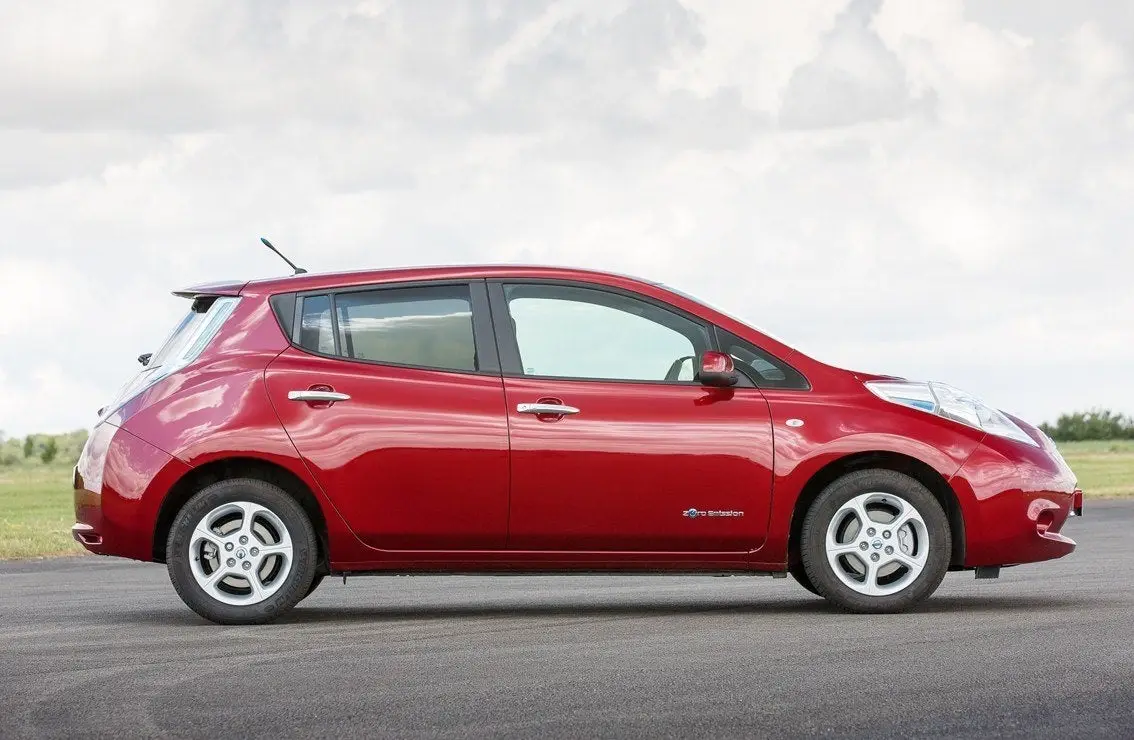
A bargain Nissan Leaf will generally be a 2014 car with the 24kWh battery. To get the improved 30kWh battery, budget from around £11,500, with lots more choice on offer from around £12,500. You’ll have the pick of 2016 and 2017 cars here, in all trim grades, and if you can up your budget just a little more, lower-mileage manufacturer-approved cars will be within reach.
Trim levels and standard equipment
The basic Nissan Leaf trim level is Visia, which sounds tempting, as it includes all-round electric windows, climate control, keyless go, Bluetooth, remote stereo controls and a combination of USB and aux-in connectivity. Crucially, however, Visia lacks the Nissan Connect touchscreen infotainment system, and also doesn’t have alloy wheels. Later versions also missed out on the upgraded, more efficient heater.
We therefore think you should start your search with Nissan Leaf Acenta. This grade includes cruise control, automatic lights and wipers, cruise control, folding door mirrors, alloy wheels and the Nissan Connect system, including a reversing camera.
Nissan Leaf Tekna is a desirable trim as it has heated front seats, black leather upholstery, 17-inch alloys, LED headlights and the powerful Bose stereo. From spring 2017, the aforementioned Nissan Leaf Black Edition arrived, bringing extra style to Acenta grade for a more affordable price than the Tekna.
Ask the heycar experts: common questions
Is this Nissan Leaf still worth buying?
What are the common problems with the Nissan Leaf?
How many miles does a Nissan Leaf get on a full charge?
Stay up to speed with great offers plus the latest car news and reviews
Keep me updated by email with the latest advice, news and offers from heycar.
By submitting you agree to our privacy policy

